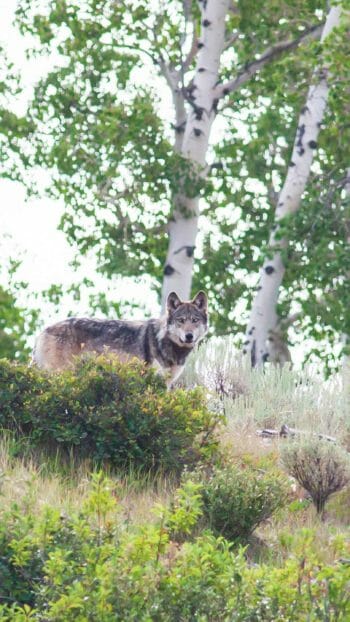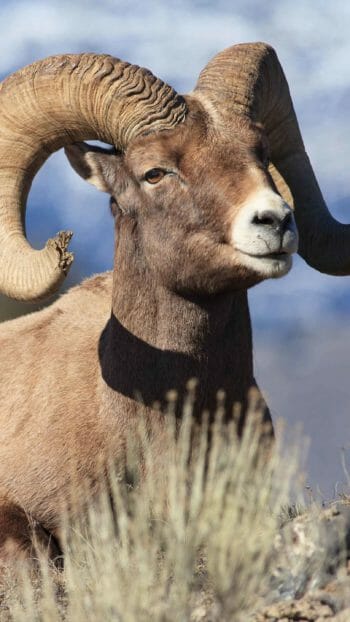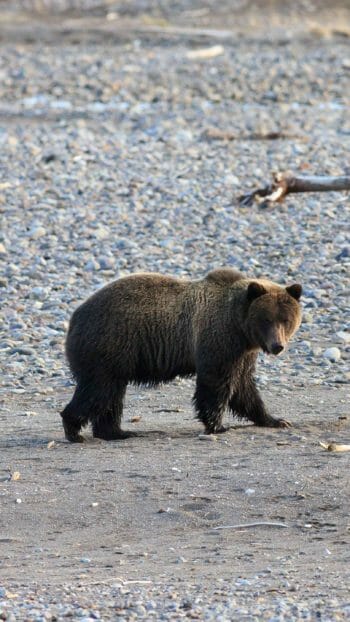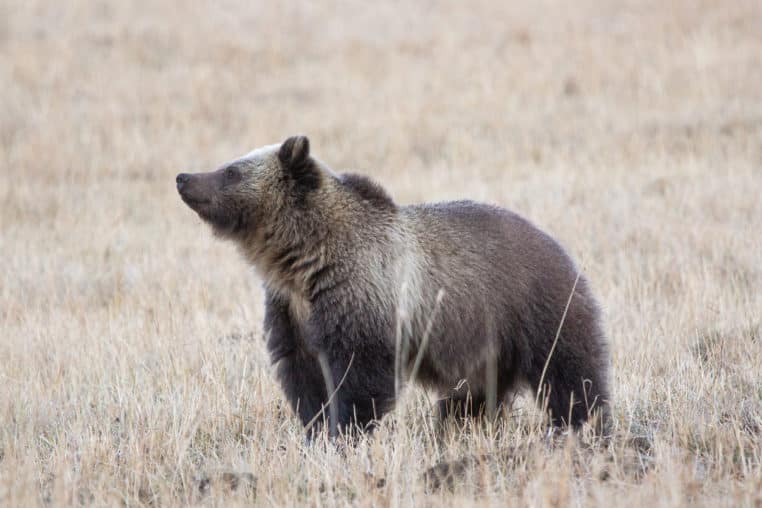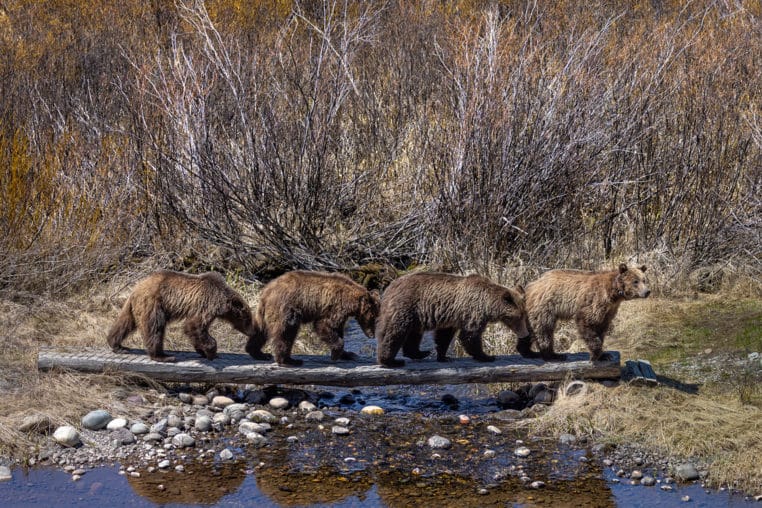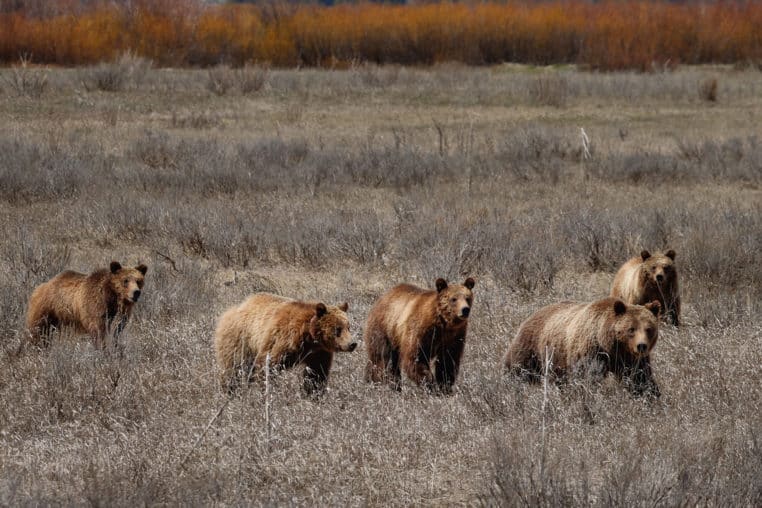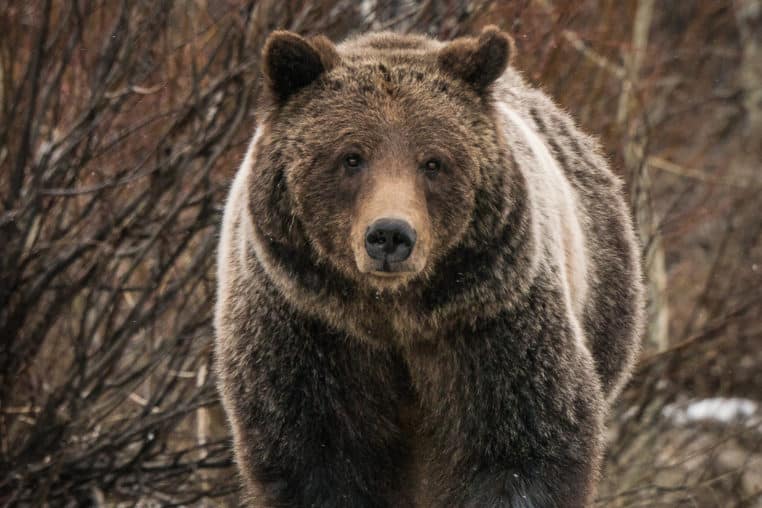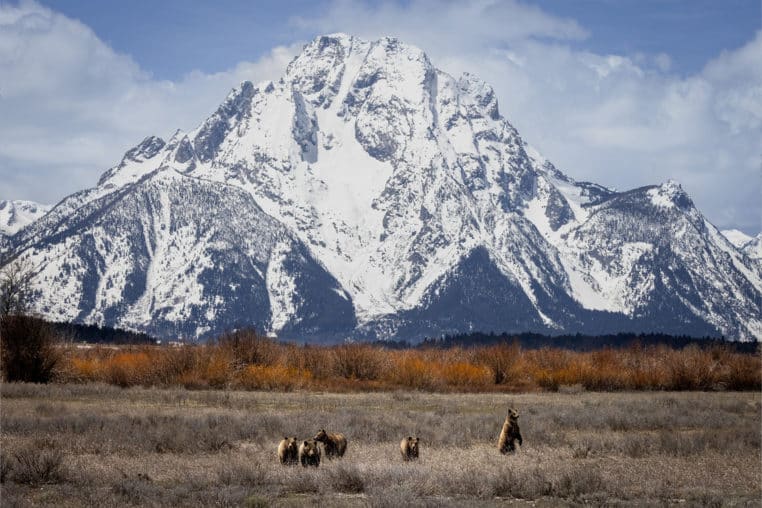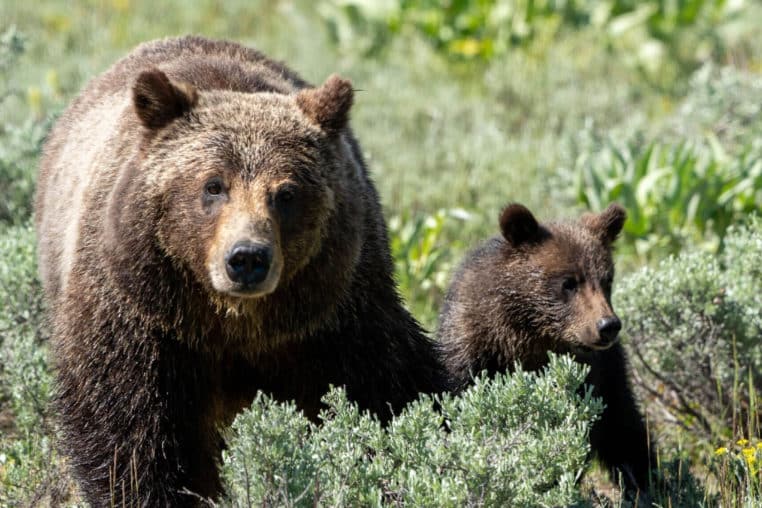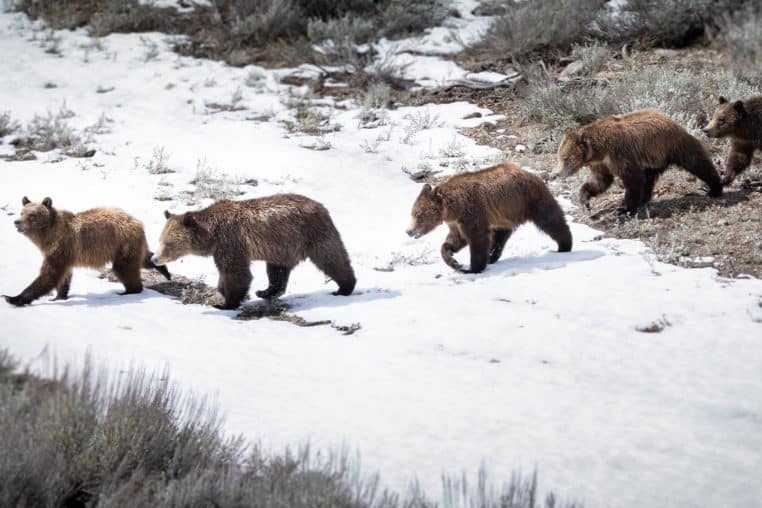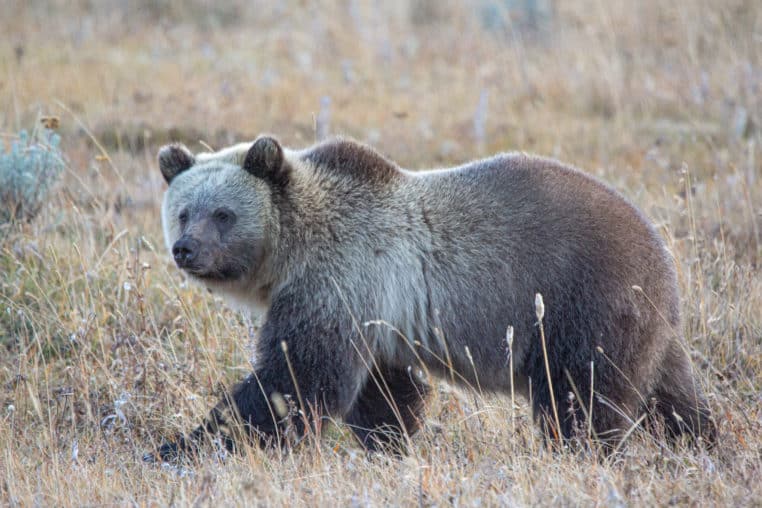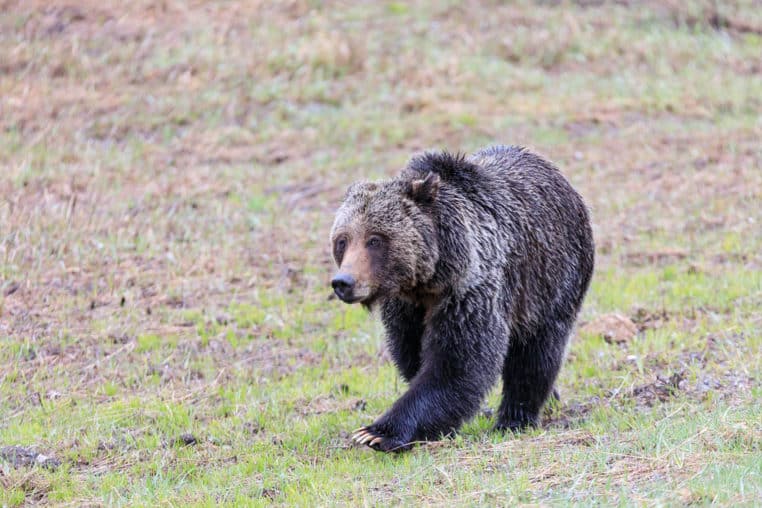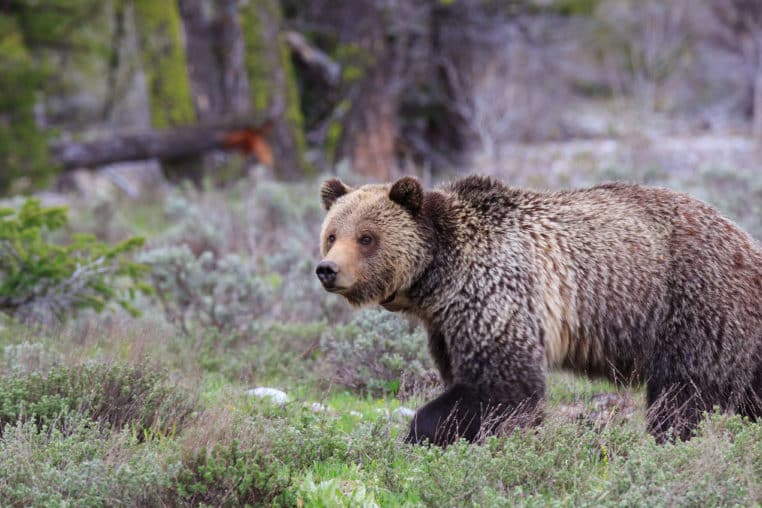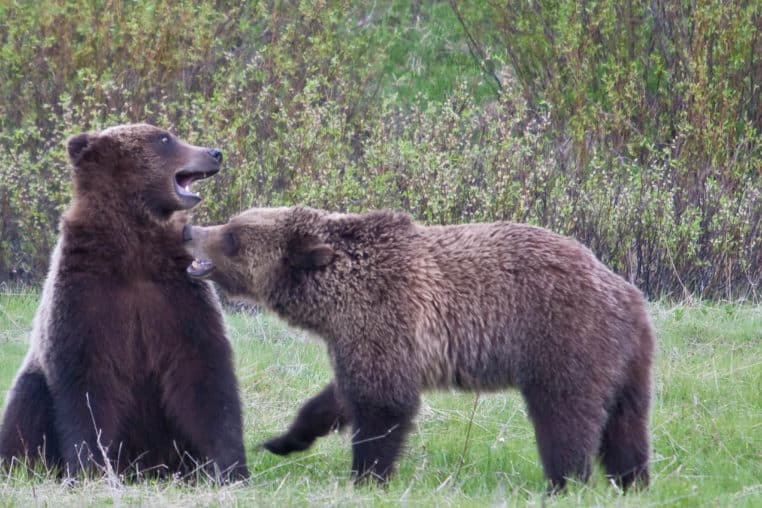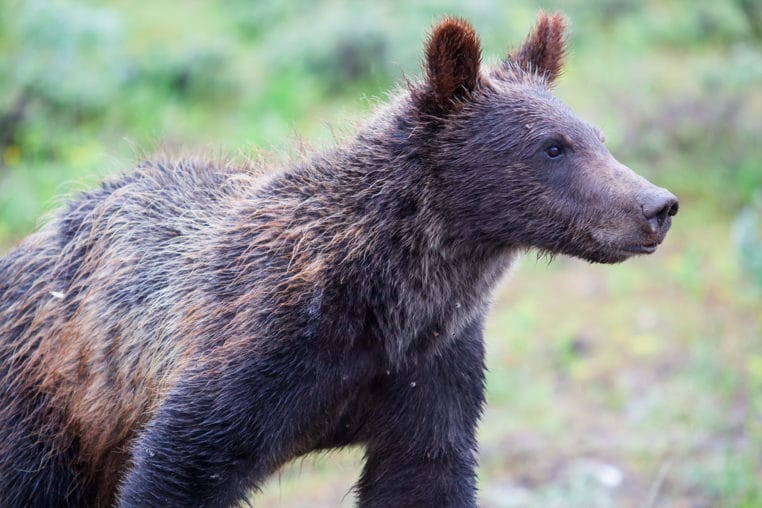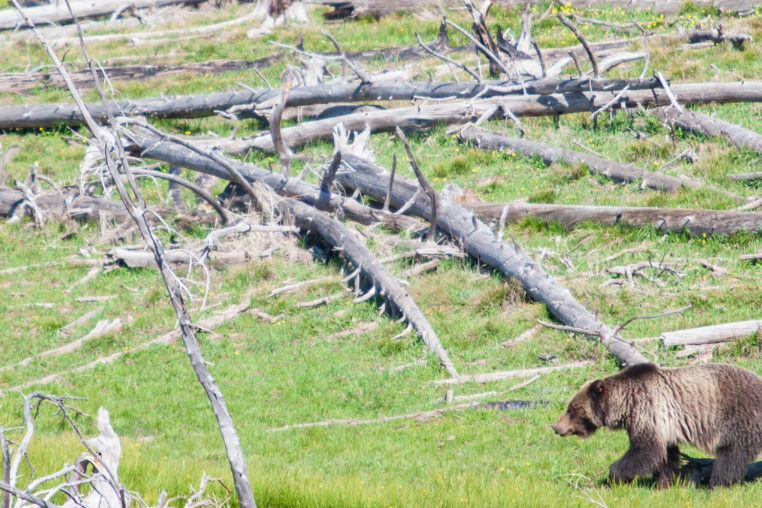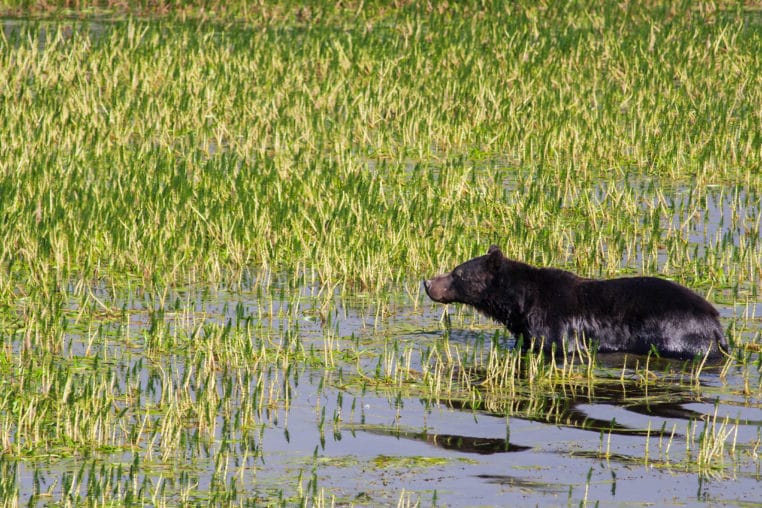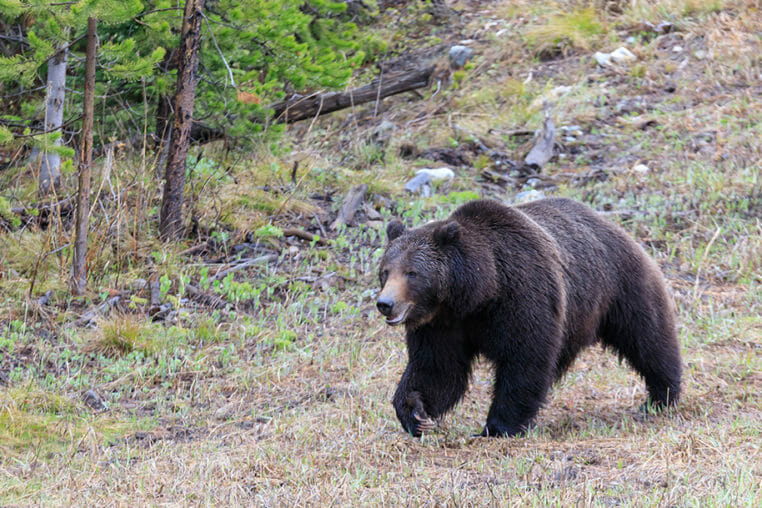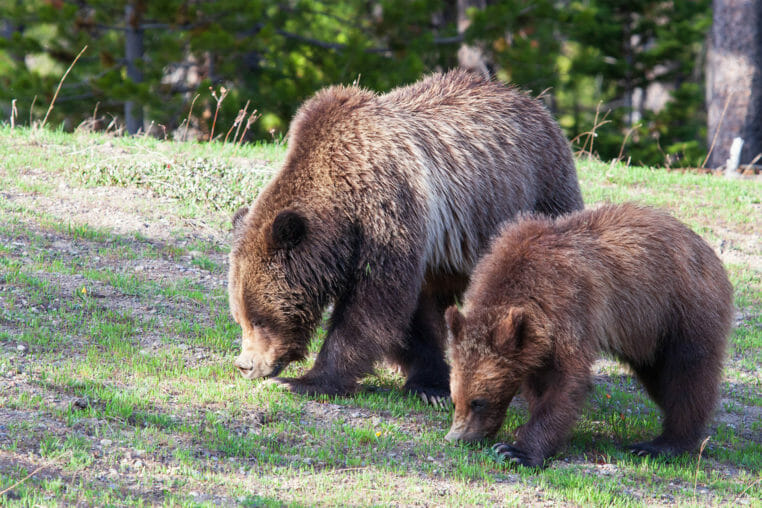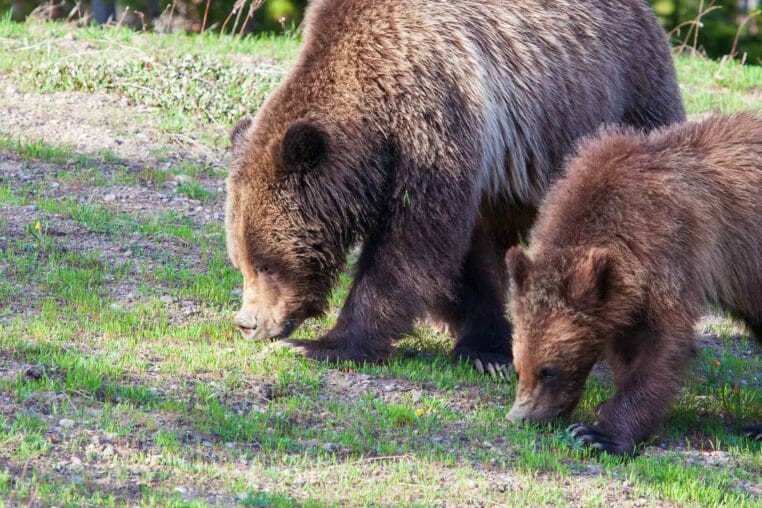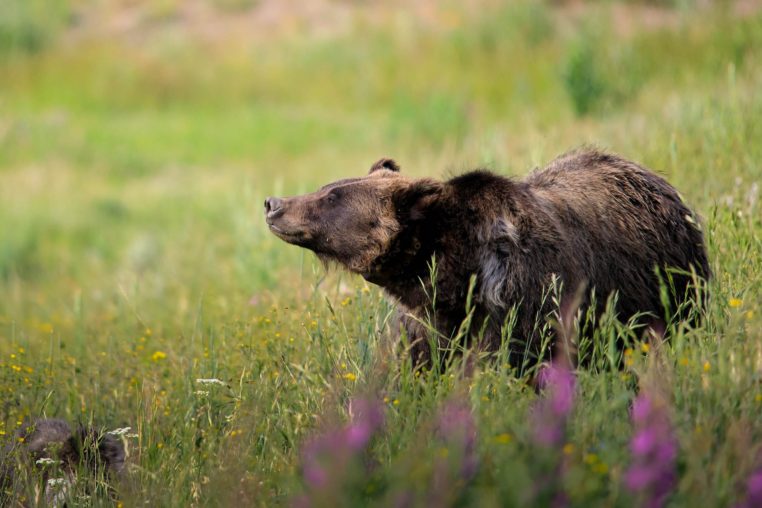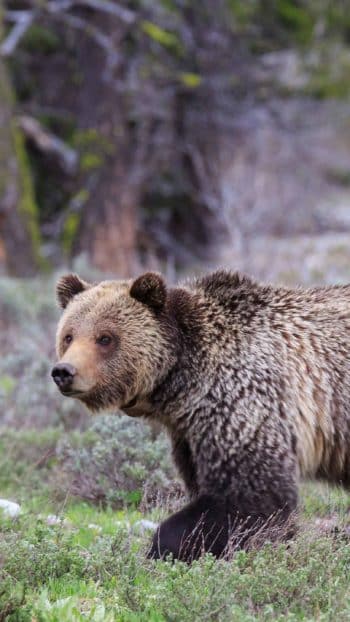
Ursus arctos horribilis
The grizzly bear is one of the most powerful and awe-inspiring animals of the Greater Yellowstone Ecosystem. Once roaming across most of the continental United States, grizzlies now survive in only a handful of strongholds, with Yellowstone and Grand Teton National Parks serving as some of their most important habitats. For many visitors, catching a glimpse of a grizzly is a highlight of their trip.
Wildlife Viewing
- Yellowstone
Book Online
Watch For Wildlife On These Tours
About
Size and Appearance
Grizzlies are a subspecies of brown bear adapted to inland habitats. The Yellowstone grizzly typically weigh between 250–600 pounds, with males much larger than females. Their distinctive shoulder hump is a mass of muscle formed by digging for food and sets them apart from black bears. They also have a concave facial profile, long claws, and fur that often looks “grizzled” with lighter tips.
Conservation Story
By the mid-20th century, grizzlies were reduced to just a few hundred individuals in the lower 48 states due to habitat loss and hunting. In 1975, they were listed as threatened under the Endangered Species Act, and since then, intensive conservation measures have helped their population grow. Today, Yellowstone is one of the best places in the world to witness wild grizzlies, a true conservation success story.
Diet and Behavior
Although they are omnivores, up to 80% of a grizzly’s diet is plant-based—consisting of grasses, berries, nuts, and roots. They also dig for insects, feed on carcasses, and occasionally hunt large mammals. Grizzlies are opportunistic feeders, which makes them highly adaptable but also vulnerable to becoming food-conditioned near human areas. This is why strict food storage rules are enforced in Yellowstone and Grand Teton.
Reproduction and Hibernation
Grizzlies have an unusual reproductive system called delayed implantation. After mating in spring, fertilized eggs remain dormant until fall, when the female’s body decides whether to implant them based on her health and fat reserves. Cubs are born in the den during January or February, weighing only 1–2 pounds. In fall, grizzlies undergo hyperphagia, a period of nonstop eating where they consume up to 20,000 calories a day to prepare for denning.
Best Times to See Grizzly Bears
Spring and fall are the best seasons to see grizzly bears in Yellowstone and Grand Teton. In spring, they emerge from their dens hungry and are often visible at lower elevations, while in autumn they forage relentlessly to prepare for winter. Look for them along treelines, meadows, and river corridors for the best chances of sightings.
FAQs
How big are grizzly bears in Yellowstone?
Grizzly bears in Yellowstone typically weigh between 250-600 pounds, with males (boars) significantly larger than females (sows). They stand about 3.5 feet at the shoulder when on all fours and can reach over 7 feet tall when standing upright.
How can you tell the difference between a grizzly bear and a black bear?
Grizzlies have a distinct shoulder hump, a concave or “dished” facial profile, and long, slightly curved claws adapted for digging. Black bears lack the shoulder hump, have a straighter facial profile, and their ears are taller and more pointed.
When is the best time to see grizzly bears in Yellowstone and Grand Teton National Parks?
The best seasons to see grizzly bears are spring and fall. In spring, they emerge from their dens hungry and often appear at lower elevations. In fall, they enter hyperphagia, a phase of constant feeding before winter, making them more visible in meadows and along treelines.
What do grizzly bears eat?
Grizzlies are omnivores, and despite their size, up to 80% of their diet is plant-based. They feed on grasses, roots, berries, nuts, and insects, but also hunt elk calves, scavenge carcasses, and dig for rodents. Their adaptability allows them to survive in diverse habitats across Yellowstone and Grand Teton.
Why are grizzly bears considered a conservation success story?
Grizzlies once roamed across most of the continental United States but were reduced to just a few hundred individuals by the mid-20th century. In 1975, they were listed as threatened under the Endangered Species Act, and thanks to decades of protection and conservation efforts, their numbers in Yellowstone have steadily grown, making them one of America’s most celebrated wildlife recovery stories.
Further Reading
Routine of Yellowstone Bears
Apr 1, 2023
Eight species of bears can be found around the globe, varying in sizes from 60 lbs to almost 1,000 lbs, from four feet to eight feet tall, inhabiting ecosystems of varying climates. Here in Yellowstone, we have our very own subspecies of the brown bear, famously known as the grizzly bear…
Summer Wildlife: Grizzly Bears, Bison, and More
Mar 25, 2023
Lamar Valley is often and accurately described as the American Serengeti. If you’re looking for a landscape where you feel surrounded by possibilities of once-in-a-lifetime Yellowstone wildlife encounters, this is it. Heavily peppered with bison, regular elk herds moving through, a shy moose by the treelines, both grizzly and black bears, and wolves in their element…

